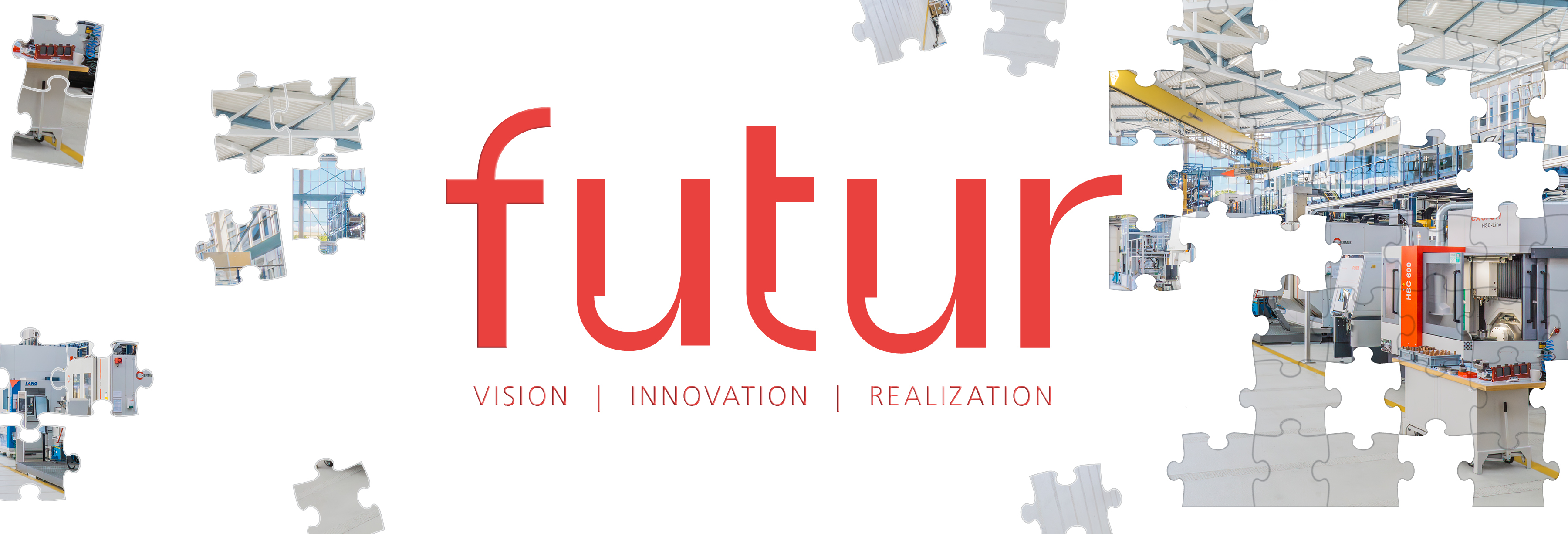The X-Factor
FUTUR: It is not only politics that is driving the creation of shared data spaces as calls for their development are growing louder among industrial companies as well. What are their key issues?
Stöckl-Pukall:
This varies greatly. For small and medium-sized companies, it starts with questions such as these: How can I get involved? What does this mean for me? For us, the participation of SMEs is a major issue, especially in regards to the question of how we can build more complex, highly innovative and interoperable data ecosystems. This is not a challenge that an SME can tackle on its own, it is a joint effort. Of course, many questions, ideas and initiatives come from this spectrum. Combining them, however, is the greatest feat. But I think it is fantastic that we have managed to gain momentum in Germany, especially with Catena-X and Manufacturing-X, and that the will to take on these challenges is there now. This is a major step that we have taken in recent years.
Kohl:
Interoperability is highly important to industry. This includes topics such as data integration and exchange, but also data sovereignty and security. When exchanging data across industrial data spaces, companies should always be able to decide who they send which data to, how the data is sent and that the data they receive is of high quality. Another important point, because it is an industrial issue, not a political or research issue: What is ultimately the added value for companies? Companies need to realize that they can access better services by using data spaces, but they can also offer services. New business models based on data exchange play an important role. This also includes topics such as standardization and compatibility.
Lindow:
Based on our many discussions with customers, we know that companies are always asking themselves how they can actually create value with data – on three levels: within the company, when they integrate different data sources internally; across companies, for example when companies enter into a data space with suppliers; and thirdly, when companies interact and connect across industries by using data spaces. The projects in the Gaia-X domains, and Catena-X in particular, are already well advanced in terms of integration in the supply chains. With Aerospace-X, we are currently trying to transfer the same mechanisms to the aviation industry. The question that companies are asking us here is this: What is the productivity advantage that we can gain in terms of added value? This is precisely where we need to meet companies.


FUTUR: Which benefits do data spaces offer in practice, particularly with regard to sustainability and the circular economy?
Kohl:
There is a popular claim that sustainability is not possible without digitalization. This is something we can agree with in principle, especially when we look at regulatory aspects. These include, for example, the Corporate Sustainability Reporting Directive, the Act on Corporate Due Diligence Obligations in Supply Chains, but also digital product passports. One very important aspect here is that not only companies within the value chain, but also downstream businesses such as recycling companies, reverse logistics companies or dismantling factories are able to obtain product and process data about the life cycle of a product in order to ultimately make the right decision as to whether something can be recovered, reused or recycled, for example. This also applies to reporting. The Corporate Sustainability Reporting Directive requires companies to report on sustainability aspects, not only in the context of their own activities, but also in relation to upstream and downstream processes. These are the so-called Scope 1, Scope 2 and Scope 3 emissions. Companies must be able to rely on the fact that they can accurately integrate the information they receive from their suppliers into their own reporting. The issue of compliance plays a major role here, i.e. how can I use data spaces to ensure that the data I receive, even from the supplier’s supplier, is actually validated and, if possible, certified. Regulation and compliance are therefore also major drivers for data exchange and value chains.
Lindow:
From a product perspective, we need to differentiate whether we want to enable circular economy and circularity in terms of value creation or whether we want to evaluate circular economy and circularity. This differentiation is not always easy – there is a lot of political pressure to say that we have to evaluate a product’s carbon footprint. But the real added value from my perspective, and this is also what often motivates companies, is to investigate: How can data models be exchanged to make product-related processes more efficient? How can companies uncover the wealth of their data that has been stored in an unstructured way? How can I subsequently label and structure this data so that I can identify suitable modules or components, for example, in order to improve reuse or remanufacturing? On the one hand, these questions are data-driven. On the other, the circular economy is indeed also an economic issue and in order to find the right answers, we need interconnected data spaces.
Stöckl-Pukall:
When we talk about data spaces, we actually mean data ecosystems that allow innovation. We are not building a use case and then a data space around it. It’s about automating a system, making it more flexible so that it can be expanded and innovations can be created based on it. The Product Carbon Footprint is certainly a regulation-driven innovation. If we have a functioning, integrated data ecosystem, this type of documentation is very easy to provide. That systemic idea is crucial for me. We need a lot of automation to bring the costs of the data economy down massively. It is interesting to note that if a Catena-X supplier delivers a product to the automotive industry, they may also deliver it to three other sectors. They would not want to deal with different systems. You simply have to connect them. Otherwise, medium-sized companies will not want to be involved at all. We will also need a department for operations, a department for onboarding and so on. Do we want every start-up to organize its own ecosystem, its own operations department? That will not work. We have to create a systemic framework, not constantly talk about the technology, but rather about what comes out of it – and that can be many things. We can see the recycling use cases at Catena-X. It is simply fantastic when data continuity creates a marketplace that benefits everyone.
Lindow:
Exactly, we need to convey to companies that they are investing in their future when they build functionality through data spaces. This will enable them to do better in the future what they cannot accomplish today. Emphasizing this strategic aspect for companies is crucial: A single use case may not yet bring immediate benefits, but it demonstrates what is technically feasible. The larger framework must be defined as part of a corporate strategy – and that is something that lies in the future. Manufacturing-X projects, for example, are working on exploiting this potential.
Stöckl-Pukall:
You always need a vision, but you also need to know how to get started: with use cases that you can get on the road quickly. It is important to present this entire spectrum clearly. I think the core issue is: How do we become »data ready« in the first place?
FUTUR: How can data normalization and standardization help with this?
Kohl:
I believe it is important to be able to verify data and to ensure that it cannot be manipulated. This is a requirement that data ecosystems have to fulfill. Another aspect is how we can use interoperability solutions to make sure that data continuity and normalization can take place. One example of this is the Eclipse Data Space Connector as part of the Catena-X initiative, which connects data from different systems so that it can be exchanged. Enabling such federated interoperability or coexisting standards is very important to us at Fraunhofer IPK.
Lindow:
When we move into the horizontal integration of data spaces and work across industries, it is not enough to talk about mere data standards. We can work at the data model level to enable exchange. Questions that come up here include how data standards can be made available in different sectors, for instance to enable the operation of machines, systems or mobile devices. But how can the same data also be used to make predictions about corrosion behavior, to then estimate the service life and finally make an assessment of recyclability based on the results? My hope is that we can think through all of these chains and develop cross-industry standards. At the moment, the focus is still very much on individual industries and their data.
Stöckl-Pukall:
I think we urgently need properly working data exchange formats and protocols for data spaces. We need some kind of governance to control the overall process in the community. For example, if an operating company is to do the onboarding, we need a certification system that regulates authorization. Or when it comes to developing open-source software that goes beyond simple, perhaps more technological standards. This needs to be constantly managed. The same applies to a standard. Just like software, standards are iterative and must be developed further. These new processes must be seen in the overall context so that a systemic approach can emerge. That is very important to me. This is not talked about enough because the roles in data ecosystems are very different. We need to work out the roles of everyone involved much more clearly so that they understand each other. Are we a company that is responsible for the underlying technology? Are we offering a service via an app? Are we a business that wants to use this app and needs to understand how it works? Or are we just starting out and need support to become data ready? Data spaces are highly complex, but not everyone has to do everything. Everyone just needs to understand their role, I think.

FUTUR: How would you encourage companies to tackle the topic of data readiness?
Kohl:
To a large extent, the future competitiveness of all companies in a supply chain will depend on it. Anyone who cannot supply the data that customers demand will have a very difficult time on the market in the future. I also believe that Germany is really in the driver’s seat at the moment when it comes to data spaces and must be careful not to lose its pole position again. We are currently leading the way in Europe when it comes to this topic, but we have to stay on the ball and promote its widespread use. So that it ultimately pays off for the German economy in terms of competition.
Stöckl-Pukall:
Essentially, we need to ensure that companies are aware of the overall vision and understand what it means for them individually. Data spaces alone are not the be-all and end-all solution here. There are also other topics such as artificial intelligence. In essence, we need systems that help us to use data together in a meaningful way. We have launched a major European IPCEI project to create not only federated data ecosystems, but also a federated digital infrastructure. I can only encourage everyone to understand and believe in this vision bit by bit. Otherwise, we will once again be overtaken by large non-European platforms and companies that are quicker to implement their ideas. We cannot wait three years every time to see if something works and only then expand on a large scale. In Catena-X and Manufacturing-X, we have now learned that you have to pursue development and the actual application on the market in parallel – instead of waiting for the big rocket to take off, you really have to go step by step. This requires the courage to start and act.
Lindow:
In short: Just get started, don’t be shy! Most companies are aware of the current problems in value creation. The potential of data and the associated technologies to solve these problems are often less well known. Bringing these two worlds together is the biggest challenge for many companies. Ultimately, companies need to find a good balance between a systematic and explorative approach in order to become data ready. It is important that they always act closely in line with their value creation and that management, IT and specialist departments all work together.

 Fraunhofer Institute for Production Systems and Design Technology
Fraunhofer Institute for Production Systems and Design Technology